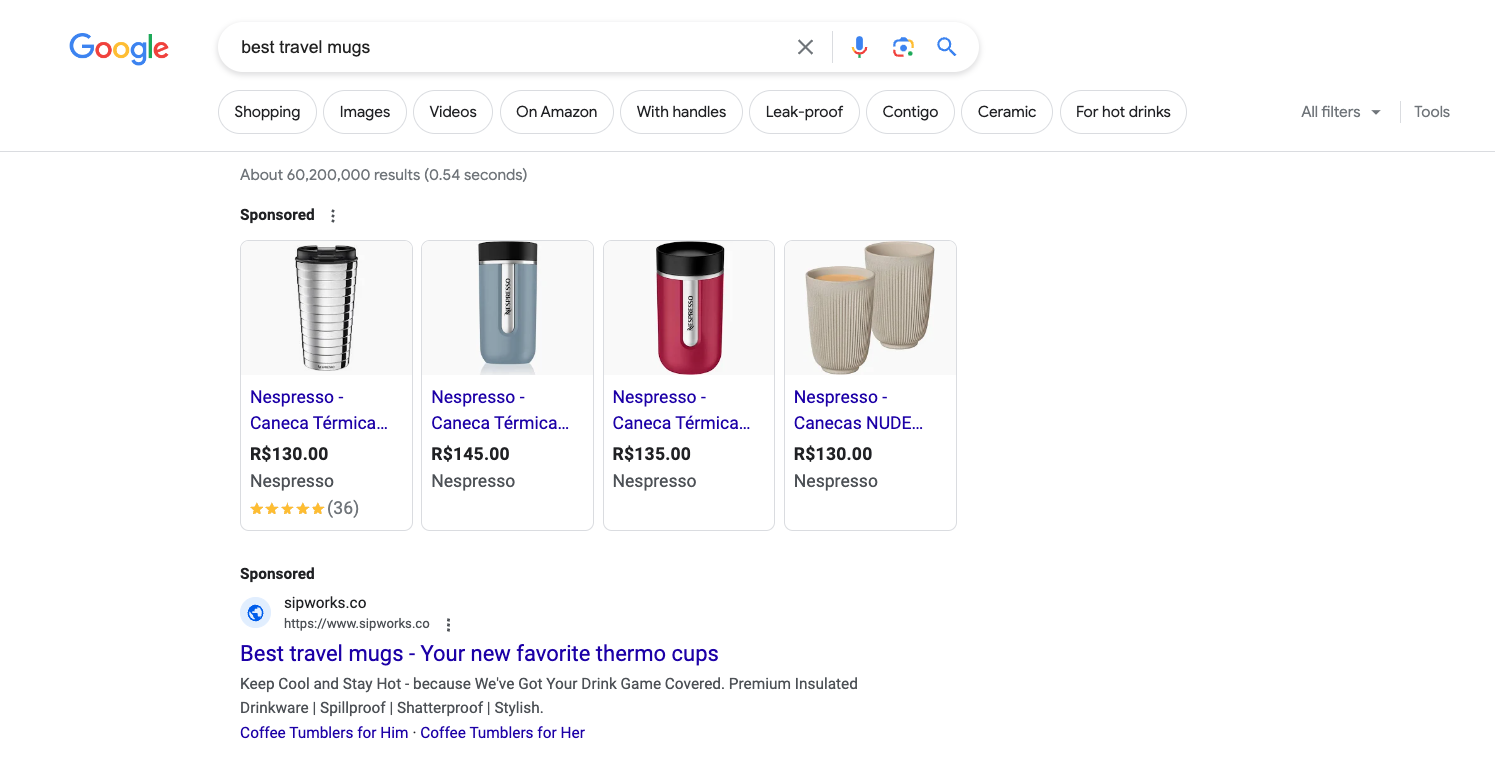Ever wondered how some websites always seem to top the search engine rankings?
That’s where Search Engine Optimization (SEO) comes into play. It’s more than just sprinkling relevant keywords or crafting high-quality content. SEO is a blend of strategies, including technical SEO, content marketing and link building, that make your web page more appealing to search engines like Google.
Think of SEO as a cornerstone to digital marketing success. From understanding search volume to competitive analysis, SEO is the key to getting noticed in Google search results. Whether you’re looking to boost your local SEO, enhance your social media presence or grasp basic SEO principles, this guide is your toolkit.
Ready to explore the world of SEO? Let’s break down these principles and build a strong foundation for your success.
Understanding SEO and How Search Works
SEO is like the secret sauce that makes your website tasty to Google and other search engines. It’s all about making your web page more visible in search engine results. Consider Google’s algorithm a picky eater; SEO is the recipe to make your site more appealing.
But, how does the search work? Imagine you’re looking for a new travel mug online. You type “best travel mugs” into Google, and voilà! Pages and pages of results.

You might ask, how does Google decide what to show you first? That’s where SEO comes in. It’s a set of rules and techniques that help your website rank higher in search engine results.
Now, let’s examine the subcategories of SEO: on-page and off-page.
- On-page SEO is akin to a company’s internal operations; it encompasses all the elements you can control directly on your website. This includes optimizing keywords, meta descriptions and ensuring high-quality content.
- Off-page SEO, conversely, is comparable to your brand’s external reputation and networking efforts. It involves factors outside your website that contribute to its credibility and authority, such as backlinks from other reputable websites, social media engagement and online reviews.
The 5 Crucial SEO Principles You Should Know
Now that we understand what it is for, let’s take a look at the five basic principles on which SEO is built:
1. Technical SEO
Technical SEO is like tuning up your car, ensuring that everything under the hood of your website runs smoothly. It goes beyond mere aesthetics; it’s about the intricate behind-the-scenes mechanics that make your site function effectively and efficiently.
What’s Included in Technical SEO?
Submitting your sitemap to Google: This is a foundational step in making your website more accessible to search engines. A sitemap serves as a roadmap, guiding Google’s crawlers through the important pages on your site.
Creating an SEO-friendly site structure: Think of this as the architecture of your website. A well-organized structure not only makes it easier for search engines to navigate your site, but it also enhances the user experience by making information easy to find.
Improving your website’s speed: Speed is more than just a convenience; it’s a ranking factor. A faster website provides a better user experience and is more likely to rank higher in search engine results.
Making your website mobile-friendly: With the advent of mobile-first indexing, ensuring that your site is optimized for mobile devices is no longer optional. It’s necessary for both ranking well and providing a good user experience.
Finding and fixing duplicate content issues: Duplicate content can dilute your SEO efforts and confuse search engines. Regularly identifying and resolving these issues is crucial for maintaining the integrity of your website and its ranking potential.
What Are the Benefits?
- No one likes to wait, especially online. Technical SEO ensures that your site loads quickly, keeping visitors engaged.
- Happy visitors stick around. By optimizing your site’s technical aspects, you create a more enjoyable experience for your users.
- Google loves a well-tuned site. By focusing on technical SEO, you can climb higher in search engine rankings.
- With more people browsing on mobile devices, ensuring your site is mobile-friendly is a must.
Technical SEO lays the groundwork for your SEO success. It’s like building a strong foundation for your house. Without it, all the beautiful design and content won’t matter if the site doesn’t function properly.
2. Keyword Research
Keyword research involves using tools like Google Analytics, Ahrefs or Semrush to find the exact words and phrases that people are typing into Google Search. It’s a precise process, not about wild guesses. The goal is to understand what your audience is looking for and identify those target keywords that resonate with them.
An essential facet of this process is understanding user intent. Essentially, you need to discern the ‘why’ behind the search query. This brings us to the four key types of keywords:
- Informational keywords are used during the research phase. Queries like “How to fix a leaky faucet” fall here.
- Navigational keywords are specific and direct, like “Facebook login” or “Semrush blog.”
- Transactional keywords indicate a readiness to purchase, such as “buy iPhone 12.”
- Commercial keywords are a blend of research and purchase intent, like “best DSLR cameras.”
Subscribe to
The Content Marketer
Get weekly insights, advice and opinions about all things digital marketing.
Thank you for subscribing to The Content Marketer!
What Are the Benefits?
- By pinpointing and targeting the right keywords, you attract visitors who are genuinely interested in what you offer. It’s like having a signpost that guides the right people to your doorstep.
- More relevant traffic isn’t just about numbers; it translates to more sales. When you speak your audience’s language, they’re more likely to buy. It’s that simple and powerful.
- Keyword research also opens up a window into your customers’ minds. Knowing what keywords they use helps you understand their needs, desires and pain points, allowing you to tailor your content and products accordingly.
Keyword research isn’t a one-time task; it’s an ongoing process that evolves with your audience and the competitive landscape. It’s about staying ahead of the curve and connecting with your audience in a meaningful way.
Want to dive deeper into the world of keyword research? Learn more about keyword research and discover how understanding them can transform your digital marketing strategy.
3. Content Marketing
Content marketing is all about crafting valuable, relevant and engaging content that truly resonates with your audience. Instead of merely stuffing articles with keywords, the real focus lies in meeting the needs and interests of your readers.
It’s a creative process that emphasizes genuine value over superficial tactics.
What Are the Benefits?
- By consistently providing valuable and insightful content, you position yourself as an expert in your field. People will start to trust your brand and look to you for answers.
- Good content is informative and engaging. Whether it’s a blog post or a video, it should resonate with your audience and encourage them to interact with your brand.
- Google loves good content. By focusing on content marketing, you’re not just pleasing your readers; you’re also enhancing your SEO efforts. Quality shared and linked content can significantly boost your search engine rankings.
- By aligning your content with the needs and interests of your audience, you can create content that truly resonates. This involves understanding the different types of search intent and crafting content that answers the questions your audience is asking.
Want to know more about user intent? Check out this article.
Content marketing is not a one-size-fits-all approach. It requires understanding your audience, researching relevant keywords, and crafting content that not only ranks well in search engine results but also connects with your readers on a personal level.
It’s about creating content people want to read, share and return to.
4. User Experience
User experience (UX) is all about creating a welcoming environment for your website’s visitors. Think of your website as your online home and your visitors as guests. You want them to feel comfortable, find what they need easily and enjoy their stay. This goes beyond just the look of your site; it’s about the overall feel and navigation.
What Are the Benefits?
- A site that’s easy to navigate keeps visitors coming back. It’s like having a well-organized party where everyone knows where to find the snacks.
- When people can find what they need without frustration, they’re more likely to make a purchase or sign up for your newsletter.
- Google appreciates a well-designed site, which can translate into better search engine rankings.
5. Link Building
Link building is the art of making connections. It’s not about collecting as many links as possible; it’s about forging meaningful relationships with other websites. These connections are like professional handshakes in the digital world: They tell search engines that your site is reputable and worth visiting.
What types of links are there?
- External links are your digital endorsements from other reputable websites. They boost your site’s authority and are crucial for search engine rankings. The key is to focus on quality, building relationships with respected sites in your industry.
- Internal links are the connectors within your website, linking one page to another. They serve three main functions:
- Improve site navigation: Make it easier for users to find relevant content.
- Distribute SEO value: Spread ‘link juice’ to elevate lesser-known pages.
- Increase user engagement: Keep visitors on your site longer, a positive signal to search engines.
What Are the Benefits?
- Quality links from respected sites boost your site’s credibility. It’s like getting a thumbs-up from the industry leaders.
- Good connections lead to more visitors. It’s networking at its best, but online.
- When other reputable sites link to you, Google takes notice. It’s a sign that your content is valuable and trustworthy.
Link building is more than just a numbers game; it’s about quality and relevance. It’s about creating connections that benefit both parties and enhance the overall web experience.
Competing in the SEO Arena
SEO isn’t a one-time thing. It’s a continuous effort that requires a solid SEO strategy. From staying on top of SEO trends to performing an SEO audit, it’s about keeping up with the digital marketing game.
But, SEO basics aren’t just about getting noticed by search engines. It’s about connecting with your audience, providing them with what they need and building relationships. Whether you’re an SEO expert or just starting, these principles are your roadmap to success in the endlessly evolving world of search engine rankings.
And, you must remember to track Performance Analytics in your SEO journey. Much like a coach scrutinizing game footage, keeping tabs on key metrics such as organic traffic, bounce rate and conversion rates is essential. This practice gauges your current success, shapes your future strategies and also enables you to make informed decisions and allocate resources wisely.
So, ready to dive into the world of SEO? These principles are your guide, toolkit and path to prosperity. Happy optimizing!





